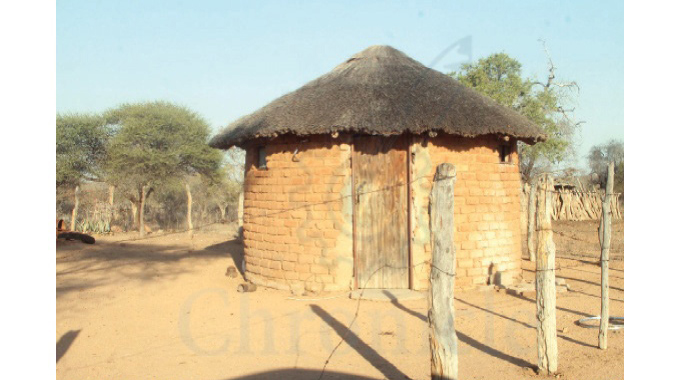Inside Matobo’s no women’s land

Sikhumbuzo Moyo, Senior Reporter
MATOBO Rural District Council was formed in 1993 and the district lies in agro-ecological regions four and five.
Northern Matobo consists chiefly of hills which gave birth to the name Matobo.
It is part of the world heritage site with its scenic sites incorporating Cecil John Rhodes’ grave, Old Bulawayo, Njelele Shrine, San rock paintings, the national park, wildlife and dam sanctuaries.

Some of the structures and livestock that belong to the villagers
These heritage sites place the district not only on the national map but world map too.
Latest preliminary census results that were announced by the Zimbabwe National Statistics Agency (ZimStat) revealed that the district has a population of 95 694 out of its 25 wards of which 48 572 are females and 47 124 are males.
Matobo is the only district in Zimbabwe with 25 wards but 24 councillors all because Ward 20, along Shashe River has 85 males and zero females.
The statistics caused a lot of debate on social media with some people questioning the authenticity of the figures but crucially why a whole ward can be said to be having no females.
As usual assumptions and perceptions were turned into truths.

“Matobo District is very unique, it has 25 wards but 24 councillors because Ward 20 is just a grazing area with no homesteads.
Our economy is mainly livestock and that area is very suitable for grazing, the soil is rich but unfortunately it cannot habour humans because it also has wild animals which may lead to human/wildlife conflict.
It also shares the border with Botswana where they are even more animals,” said Matobo District Development Co-ordinator Mr Innocent Chaputsira.
He said at one time, there were plans by council to turn the area into a sanctuary but there is resistance from villagers.
ZimStat public relations and communications manager Ms Mercy Chidemo said villagers from neighbouring communal areas practise a partial nomadic life and when pasture for their animals diminishes in their usual areas of habitation, they take their animals to the area for grazing.

She said when enumerators entered the ward, they accounted 85 males who spent the census night on April 20 in those temporary structures.
In 2012, said Ms Chidemo, they were 49 males and 15 females.“Ward 20 in Matobo falls in an area called Emlageni along Shashe River.
It is council land with no permanent residents.
They put up temporary structures as shelter.
They will reside in this area for months and then go back to their usual places of residence when summer sets in.
When our enumerators entered the ward, they accounted 85 males who spent the census night in the ward on 20 April 2022,” said Ms Chidemo.
She said the census was conducted using the de facto method that entails enumeration of persons who slept at a given place on the census night irrespective of their place of usual residence.

“These figures are comparable to what was accounted in the 2012 census when our enumerators accounted 15 females and 49 males giving a total of 64 for the ward,” said Ms Chidemo.
A Chronicle news crew took the 370km trip to Emlageni last Friday to get first-hand proof that indeed, the area had no women.
It took a seven-hour drive to Emlageni which involves a stretch of nearly 15km of a heavy and dense forestry before getting first sight of domestic animals especially goats.
This was however before we came across impalas.
Upon arrival at Emlageni, there was clearly proof of human activity as footprints could be seen, empty kraals, cattle and goats grazing freely while the man’s best friend, dogs were jealously guarding the homesteads.
‘‘So you thought you would find women here, what will they be doing. Kusemlageni (pasture) that side, only men are found that side but since today it’s a Friday and its after 5PM, perhaps they could be entertaining themselves in the villages or even Botswana or some could have visited their wives,’’ said a villager from Ntabasimbi Village which borders the Emlageni who identified herself as MaSibanda.











Comments